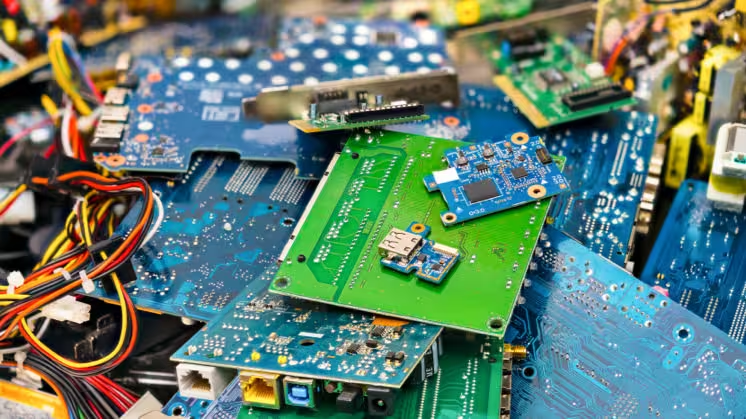As we increasingly rely on technology, it’s easy to overlook how our devices & interfaces are harming the environment. From energy consumption during usage to the carbon footprint left by manufacturing and disposal, our tech habits contribute to environmental degradation. The vast amounts of e-waste generated and the toxic materials used in production further exacerbate the problem. Understanding these hidden ways our devices and interfaces harm the environment is crucial in fostering more sustainable tech practices and reducing our overall ecological footprint. Embracing greener alternatives can make a significant difference.
3 Ways Our Devices & Interfaces Are Harming the Environment
1. Digital media and e-waste

Our smartphones, integral to daily life, are silently harming the planet. The digital world now encompasses billions of devices, each demanding substantial energy. The environmental impact of smartphones begins long before they reach our hands. Manufacturing a new smartphone accounts for 85% to 95% of its total CO2 emissions over two years. The production process involves a 500,000-mile journey across continents, as detailed by Edward Humes in “Door to Door,” emphasizing the environmental toll.
Moreover, the trend toward larger smartphones exacerbates the problem. Bigger devices require more rare minerals like aluminum, gold, and cobalt, and increased plastic production, all contributing to a higher carbon footprint. The cumulative effect of billions of smartphones being produced and used globally is immense, leading to significant environmental degradation. Amanda Sterling’s talk, “Dirty Digital Humanities: from iPhones to e-waste,” highlights the “unruly amount of toxic pollution, wasted clean water, and ecological destruction” resulting from smartphone production and usage.
Additionally, smartphones are often treated as disposable. A poll revealed that nearly 50% of users replace their phones every two years, with 20% upgrading annually. This cycle of consumption exacerbates the e-waste problem, further harming the environment.
2. Wasteful digital storage and the dark side of the cloud
“The internet is the biggest thing ever built. It’s used by 4Bn people every day. And it’s mostly powered by coal.” James Christie at Sustainable UX
Technology has undeniably made our daily tasks more efficient, eliminating physical limitations like paper with e-receipts and replacing printing with cloud-based photo sharing, as Amanda Sopkin highlights in her “Skeletons in our E-Closets” talk. While these digital solutions appear more sustainable, they often have an unexpected environmental cost.

Despite advances in energy efficiency, the e-space we rely on to save energy can have the opposite effect. As our reliance on digital platforms grows, so does our environmental footprint. Amanda Sopkin points out the staggering amount of data we generate: every minute, 300 hours of YouTube content, 510,000 Facebook comments, and 350,000 tweets are produced. In 2010, Twitter developer Raffi Krikorian estimated that each tweet generates 0.02 grams of carbon dioxide, which amounts to 11 U.S. tons of CO2 emissions in a single day. This is the energy consumption we don’t often consider.
The digital cloud, which stores all this data, relies on thousands of energy-intensive servers, primarily powered by coal and fossil fuels. Amanda Sterling notes that the cloud alone consumes more energy than many countries, meaning every file we store and every song we stream contributes to our carbon footprint.
3. Energy expenditure and the Internet of Things
The Internet of Things (IoT) significantly contributes to energy consumption, primarily because wireless technology, which underpins IoT, consumes more energy than wired connections. The IoT is an expanding network of physical devices, vehicles, and home appliances embedded with electronics and software, allowing them to connect and exchange data seamlessly.
However, the challenge with IoT lies in these connections. As telecommunications expert Kerry Hinton explains, the energy efficiency of IoT devices varies widely. On the lower end, simple devices like vending machine sensors are designed to be energy-efficient, often powered by long-lasting batteries with supplemental energy from sunlight or heat. In contrast, more complex IoT devices, such as smart home assistants or connected appliances, require significantly more energy, especially those that rely on mains power and constant data transmission.
For example, when you ask Alexa to adjust the temperature, a complex chain of data exchanges occurs across multiple data centers, each requiring substantial energy. This energy consumption often extends beyond what we see on our electricity and mobile data bills, as highlighted in Mozilla’s Internet Health Report 2018. The cumulative energy demand from these IoT interactions adds up, contributing significantly to overall energy usage and environmental impact.




